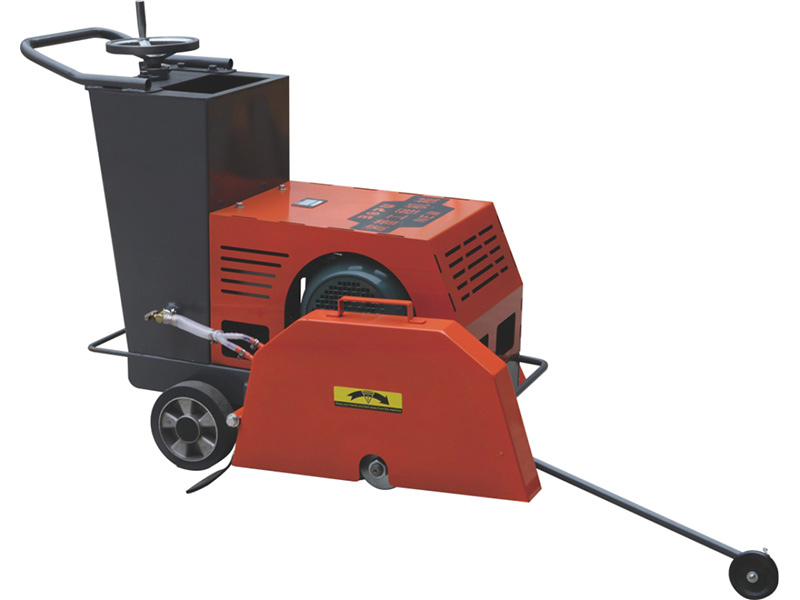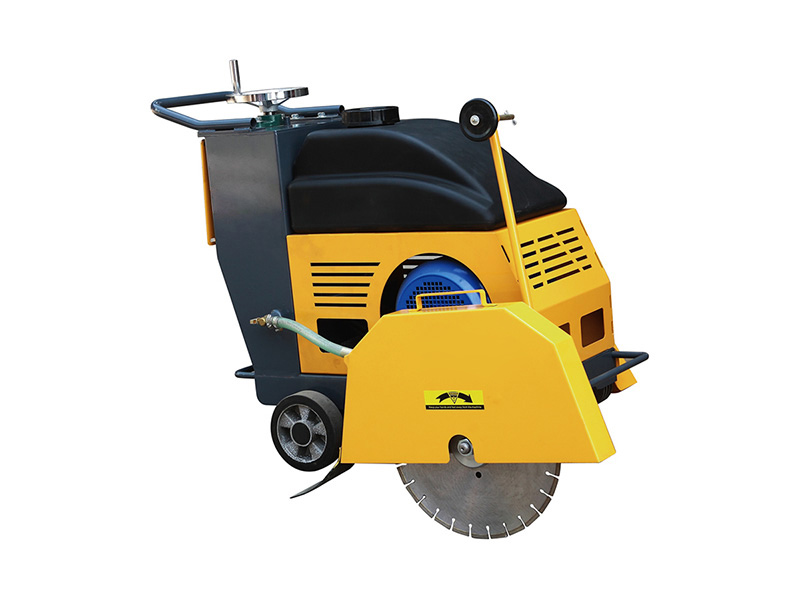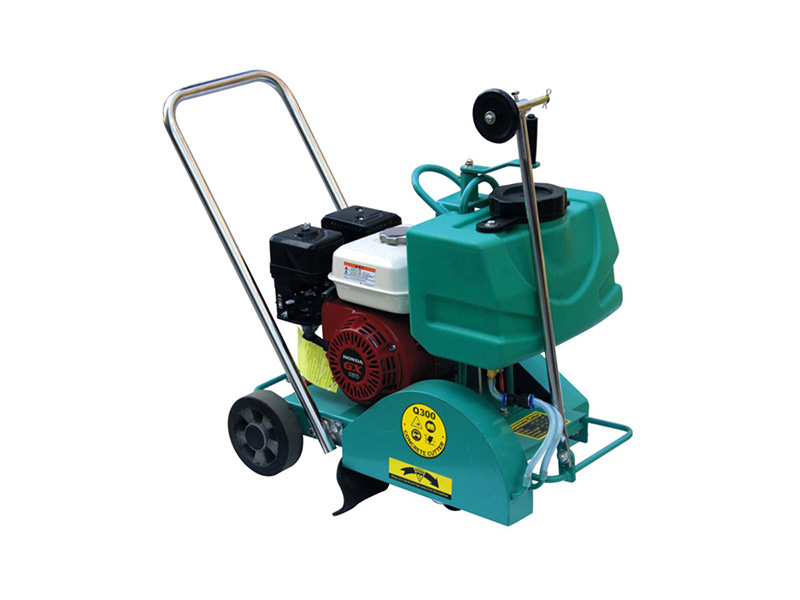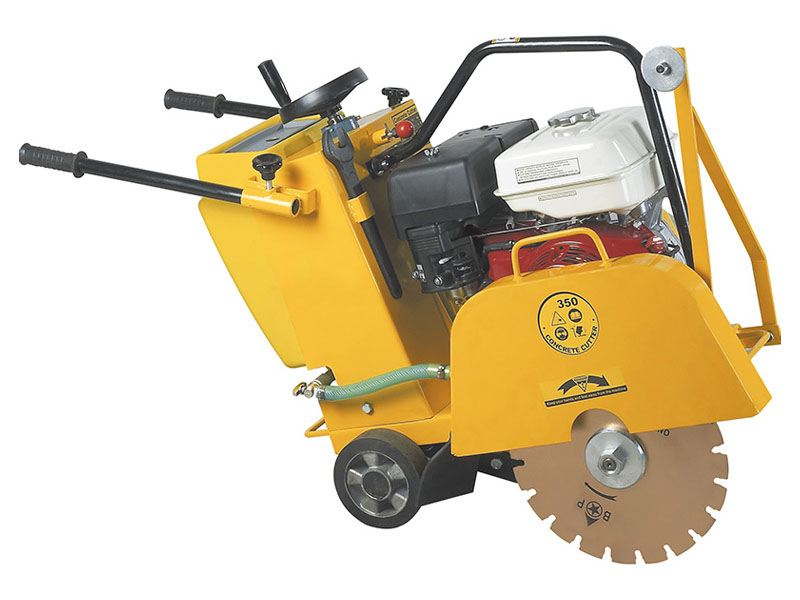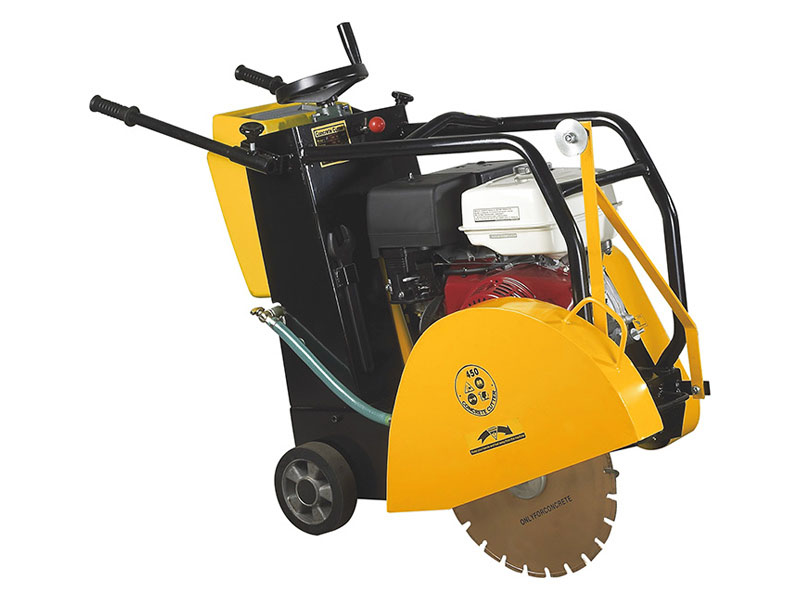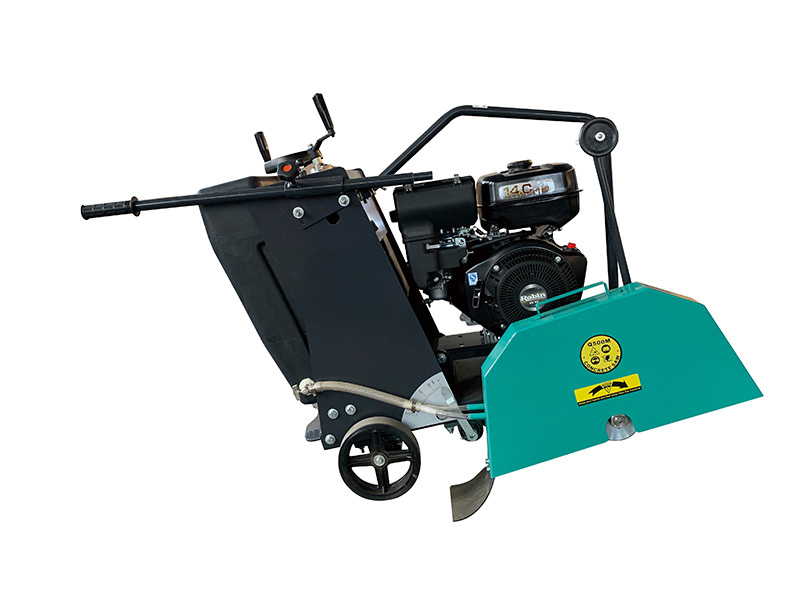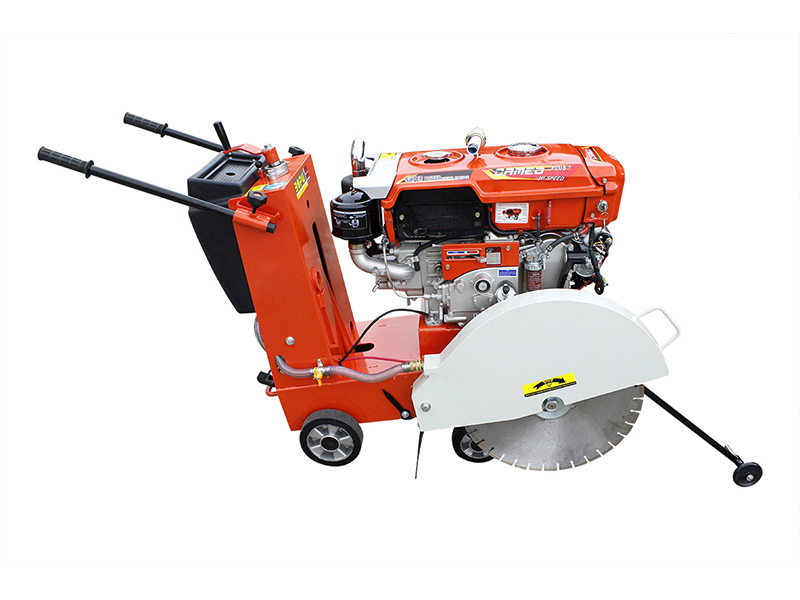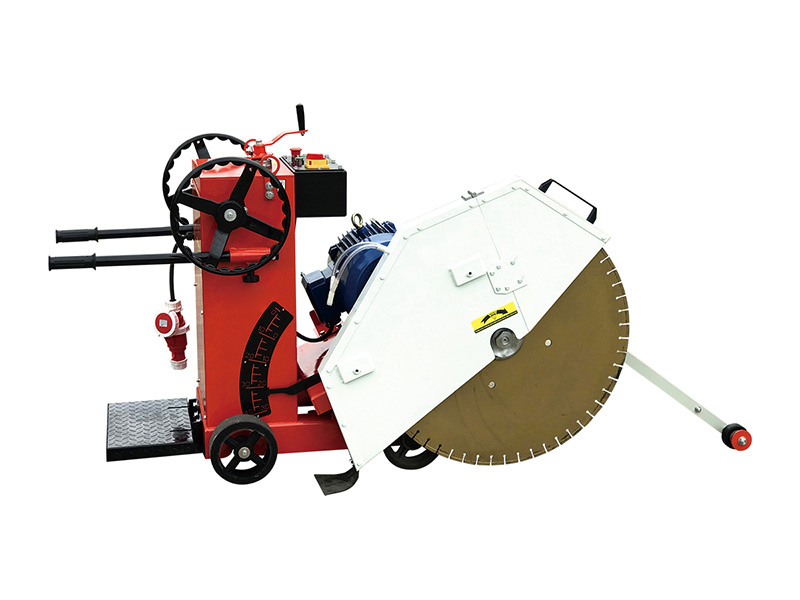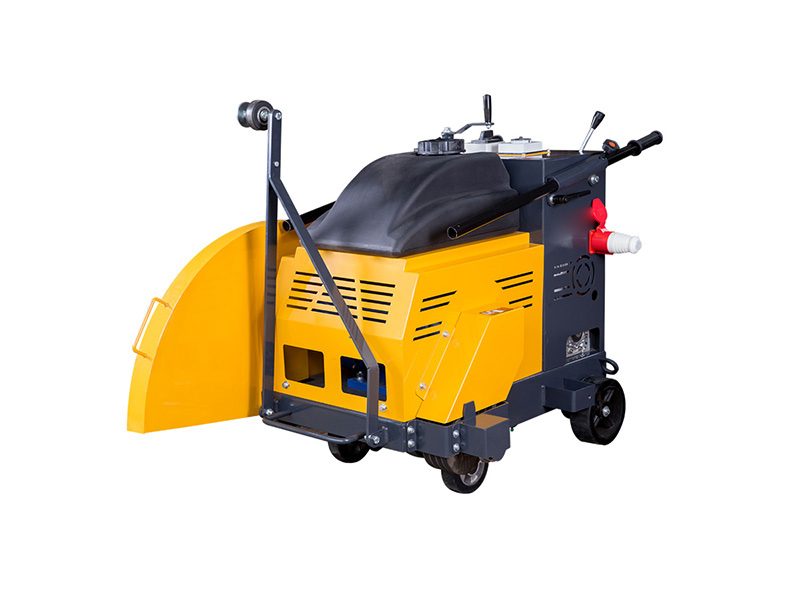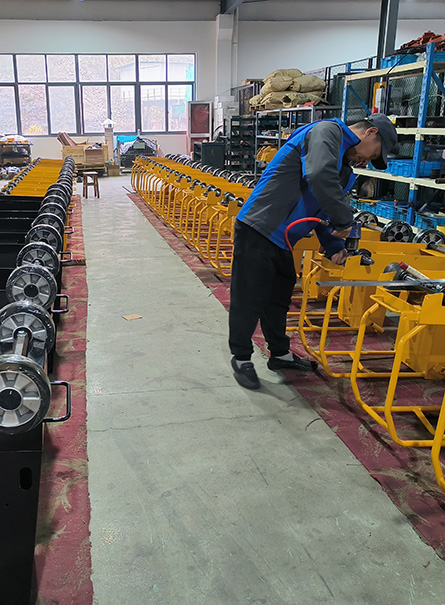HCS18 Concrete Saw with 10HP Electric Motor
Engine Power(HP)
7.5KW/10HP
Cutting Depth(mm)
150
Blade Diameter(mm)
450
HCS20 Concrete Saw with 10HP Electric Motor
Engine Power(HP)
7.5KW/10HP
Cutting Depth(mm)
180
Blade Diameter(mm)
500
HCS300 Concrete Saw with 5.5HP HONDA or LONCIN Engine
Engine Power(HP)
4.2KW/5.5HP
Cutting Depth(mm)
80
Blade Diameter(mm)
300
HCS350 Concrete Saw with 9HP HONDA or LONCIN Engine
Engine Power(HP)
6.8KW/9HP
Cutting Depth(mm)
150mm
Blade Diameter(mm)
350
HCS400 Concrete Saw with 13HP HONDA or LONCIN Engine
Engine Power(HP)
10KW/13HP
Cutting Depth(mm)
150
Blade Diameter(mm)
400
HCS450 Concrete Saw with 13HP Gasoline or Diesel Engine
Engine Power(HP)
10KW/13HP
Cutting Depth(mm)
200MM
Blade Diameter(mm)
450
HCS500M Concrete Saw with 13HP Gasoline or Diesel Engine
Engine Power(HP)
10KW/13HP
Cutting Depth(mm)
200
Blade Diameter(mm)
500
HT600D Concrete Saw with 12HP Water-cooled Diesel Engine
Engine Power(HP)
9KW/12HP
Cutting Depth(mm)
220
Blade Diameter(mm)
600
HCS800 Hydraulic Concrete Saws with 20HP Engine
Max Power/RPM
HCS800D: 20Hp@3600r/min COHO Diesel
HCS800H: 20Hp@3600r/min HONDA GX630
Max.Cutting Depth
320mm; Automatic feed
G.W
HCS800D: 360kg; HCS800H: 310kg
HT800E Electric Concrete Saws with 15HP and 320mm cutting depth
Engine Power(HP)
11KW/15HP
Cutting Depth(mm)
320
Blade Diameter(mm)
800
HCS1000E Electric Concrete Saws with 15HP and 400mm cutting depth
Engine Power(HP)
11KW/15HP
Cutting Depth(mm)
400mm
Blade Diameter(mm)
1000
HT1200E Electric Concrete Saws with 29.5HP and 500mm cutting depth
Engine Power(HP)
22KW/29.5HP
Cutting Depth(mm)
500mm, automatic feed
Blade Diameter(mm)
1200
What Is a Concrete Saw?
A concrete saw, also known as a road saw or consaw, is a specialized tool for cutting hard materials like concrete, brick, asphalt, and tiles. Unlike regular saws, concrete saws are designed for more demanding tasks in the construction industry. They offer precision and safety, especially when cutting through tough materials.
These saws feature diamond-tipped blades, allowing for two main sawing methods:
- Wet Sawing: An eco-friendly technique using water to lubricate and cool the blade.
- Dry Sawing: Ideal for outdoor use, this method involves quick, repetitive cuts to prevent blade overheating, albeit producing more dust.
The defining characteristic of a concrete saw is its ability to cut deeper than standard saws, making it suitable for materials like stone, bricks, and granite.
Different Types of Concrete Saws
- Chainsaws: These handheld saws are perfect for deep, precise cuts, especially in tight spaces. Their design allows cutting through walls, floors, brick, and concrete effectively.
- Walk-Behind Saws: Known for their size and power, these are essential for contractors for cutting roads, driveways, and sidewalks. They offer flexibility in cutting through concrete without disturbing the surrounding surface.
- Circular Saws: Versatile and commonly used, circular saws are suitable for cutting a variety of materials, including concrete. They can be handheld or mounted, offering a range of cutting possibilities.
- Wall Saws: Used for vertical cutting, these are ideal for creating openings in concrete structures. Operated via hydraulic or electric power, they ensure precise cuts with minimal friction.
Power Sources of Concrete Saws
Concrete saws, essential tools in construction, require a power source to operate effectively. The most common power sources for these saws include gasoline engines, hydraulic pressure, pneumatic systems, and electric motors.
Each type of engine plays a crucial role in driving the saw, enabling the rotation of a specialized blade designed for cutting concrete. The blade commonly used in these saws is the diamond blade, renowned for its strength and durability.
Diamond blades are particularly suited for concrete cutting due to their robust nature, allowing them to cut through not only concrete but also steel bars. This feature is vital, considering that many concrete blocks in construction are reinforced with steel bars. Therefore, to efficiently cut through such reinforced concrete or concrete with rebar, a sturdy and long-lasting blade like the diamond blade is indispensable.
Pros and Cons of Purchasing Concrete Saws
Pros:
- Precision Cuts: Guaranteeing high-quality outcomes with every use.
- Speed: Enhanced by powerful motors and high RPMs, these saws expedite cutting processes.
- Dust Management: Featuring both dry and wet cutting options to minimize dust exposure.
Cons:
- Safety: Usage demands strict adherence to safety protocols.
- Investment: High-end safety and performance features might reflect in the cost.
Considerations Before Purchasing a Concrete Saw
When in the market for a concrete saw, consider the following:
- Cost: Determine your budget as prices can vary significantly based on the type and size of the saw.
- Job Type: The nature of your project will dictate the kind of saw needed, whether for straight-line cuts or deep cutting.
- Blade Type: Decide between diamond-tipped blades for long, deep cuts, and corundum masonry blades for shorter, shallower cuts.
- Convenience and Accessibility: Assess the saw's ease of use, size, and suitability for your working environment.
- Safety Features: Look for saws with safety measures like dust filters and voltage protection.
How deep can a walk behind concrete saw cut?
The walk behind concrete saws produced by Horizont Machinery, different models have different cutting depths. It can cut up to 20 inches deep (50cm) like our HT1200E electric walk-behind concrete saw. The cutting depth is available from 3.2inch to 20inch, and there are 9 kinds of saw blades for concrete with different diameters, which can be selected according to your needs.
The best concrete saw is equipped with a blade specially designed for cutting hard materials such as concrete, brick, and stone. Depending on the type of deep-cut concrete saws, it can also cut asphalt and other materials. The commercial concrete saw is most commonly used in street and road construction, and for cutting ditches and forming drainage systems. It is a powerful and efficient tool that cuts quickly and accurately through even the toughest materials.
How does walk-behind concrete saw cut straight lines?
Walk behind concrete saw It takes several steps to cut a straight line.
First, you should mark the area with a marker. After marking, you should use a plumb bob or laser level to ensure the line is straight. Once the line is straight, you can buy or rent a concrete saw to start cutting. Start the horizontal concrete saw and guide the blade carefully along the marked line. Keep the blade straight and use light pressure to ensure a clean cut. When you're done cutting, use a broom or brush to remove any dirt or debris. Following these steps will help your walk-behind concrete saw achieve straight cuts.
How fast is the walk-behind concrete saw?
Quickly and efficiently are the main features of the walk-behind concrete saw. This dustless concrete saw is designed to cut concrete easily. It usually runs on gasoline and diesel-powered engines, we also have electric-driven versions to protect our environment, such as HT1200E, HT800E, HCS1000E, HCS700E, and so on.
The running speed of the concrete saw can be 2km/h. Depending on differences in the size, rotary speed, and engine of the saws, the cutting speed is very different to ensure safety. This industrial concrete saw is ideal for a large construction site.
What happens if you cut concrete too deep?
If the cutting depth of the concrete is too deep, the structure will be unstable which can cause the concrete to crack, and lead to serious structural damage. At the same time, cutting too deep can cause the concrete to become uneven, which is not safe for pedestrians and vehicles. Water will also seep into the concrete, causing further instability and weakening.
It is very important to make sure of the cutting depth, and then decide which concrete saws to choose. We have 3.2inch, 5.9inch, 7inch, 7.9inch, 8.7inch, 9.9inch, 10.6inch, 16inch, 20inch concrete saws for optional choice.


